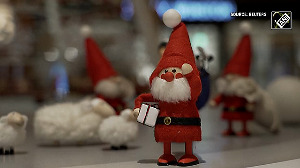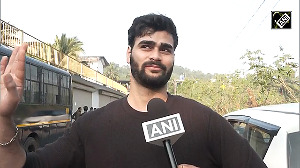They are scientists all. Some are inventors. Others chemists. Physicians. Biologists. Or chip designers.
They are all under 35. And they may revolutionise our world.
They are the five Indian Americans who have been named to the Massachusetts Institute of Technology's Technology Review magazine's 2005 list of top 35 young innovators.
The TR35s -- as they are known -- are chosen by this Boston-based magazine's editors and an elite panel of judges (selected from organizations like Boston University, Massachusetts; GE Global Research, Microsoft, Hewlett-Packard, Georgia Tech, Atlanta; Northwestern University, Chicago, Illinois and MIT itself) for innovative work in technology that has a profound impact on today's world.
Technology Review is one of the oldest magazines in the field of technology and focuses on emerging technologies and analyses their commercial, economic, social and political impact.
The work of these selected innovators will be highlighted at an exhibit presented in the MIT Museum's Emerging Technologies Gallery this month and next in Cambridge, Massachusetts.
'The TR35 is among the most prestigious honours that can be bestowed on a young innovator,' announced TR Review editor in chief Jason Pontin. 'We hail their accomplishments and look forward to even more from them in the future.'
The Indians in the lineup this year are -- Anita Goel, 32; Rajit Manohar, 33; Adam Rasheed, 31; Shiladitya Sengupta, 33; and Narasimha Chari, 31.
Anita, a physicist and physician, studies the tiny proteins that edge their way along DNA, reading and copying the genes inside each cell. While studying physics at Harvard University, Massachusetts, she put forth a theory to shed light on how these molecular motors work. She is the founder and CEO of Nanobiosym Inc, Medford, Massachusetts. The company, which receives funding from the Defence Advanced Research Projects Agency (a US Department of Defence agency that develops new technology for the military), facilitates the development of biosensors for pathogen detection. Narasimha Chari Narasimha, co-founder of Tropos Networks, Sunnyvale, California, has introduced commercial wireless mesh networking. According to TR magazine, when Wi-Fi equipped laptops were still something special in the early 1990s, he saw the potential of putting together expansive communications infrastructures using wireless mesh networks, which, at the time, was being used exclusively by As a graduate student of physics at Harvard University, he used his spare time to create excellent algorithms that tailored mesh networking for civilian communications. Tropos' services, which rely on his routing protocols, dominate the growing mesh-networking industry. The magazine noted that Tropos' expansion is bringing him full circle. 'In 1992, after receiving the third highest score out of 80,000 on the IIT entrance exam, Chari left India for Calfornia Institute of Technology, Pasadena, California. Later, while at Harvard, he had late-night talks with Caltech pal Srikrishna about providing anytime, anywhere communications in developing countries. Now, as Tropos ships its first systems to India, Chari is seeing his innovation connect back to his homeland,' says TR. Rajit Manohar
He speeds up chips and lowers power consumption by removing the clock. His signature chips are 10 times more energy efficient than earlier clockless chips. Adam Rasheed
Shiladitya Sengupta
Shiladitya, an assistant professor at Harvard Medical School and Brigham and But his most important invention, based on toy (many small balloons trapped within a bigger one), is a nanoscale drug delivery device to treat cancer.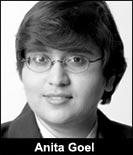 Anita Goel
Anita Goel
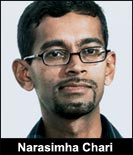 the military.
the military. Rajit, an associate professor of electrical and computer engineering at Cornell University, New York, has been noticed for his enhancement of the chip. An onboard clock harmonises the different functions of a computer chip, but this means the fastest operations can't pass on their data until the slowest have finished.
Rajit, an associate professor of electrical and computer engineering at Cornell University, New York, has been noticed for his enhancement of the chip. An onboard clock harmonises the different functions of a computer chip, but this means the fastest operations can't pass on their data until the slowest have finished.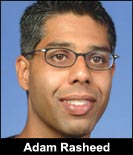 Adam, who works with GE Global Research, Niskayuna, New York, made far-reaching improvements to an aircraft propulsion system founded on a pulsed-detonation engine. With his technology there is a five per cent gain in fuel efficiency. He was the first to use this technology to power the turbines in today's jet engines.
Adam, who works with GE Global Research, Niskayuna, New York, made far-reaching improvements to an aircraft propulsion system founded on a pulsed-detonation engine. With his technology there is a five per cent gain in fuel efficiency. He was the first to use this technology to power the turbines in today's jet engines.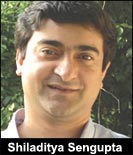 Women's Hospital, Boston, Massachusetts, was a master's student in India when he invented an anti-inflammatory gel. Even today this gel is sold under the brand name Nimulid in India. During his doctoral studies at the University of Cambridge, Britain, he discovered how a protein that brings about liver regeneration also helps blood vessel growth. He co-founded Dynamic Biosystems to turn the discovery into treatments for chronic wounds such as pressure sores.
Women's Hospital, Boston, Massachusetts, was a master's student in India when he invented an anti-inflammatory gel. Even today this gel is sold under the brand name Nimulid in India. During his doctoral studies at the University of Cambridge, Britain, he discovered how a protein that brings about liver regeneration also helps blood vessel growth. He co-founded Dynamic Biosystems to turn the discovery into treatments for chronic wounds such as pressure sores.



